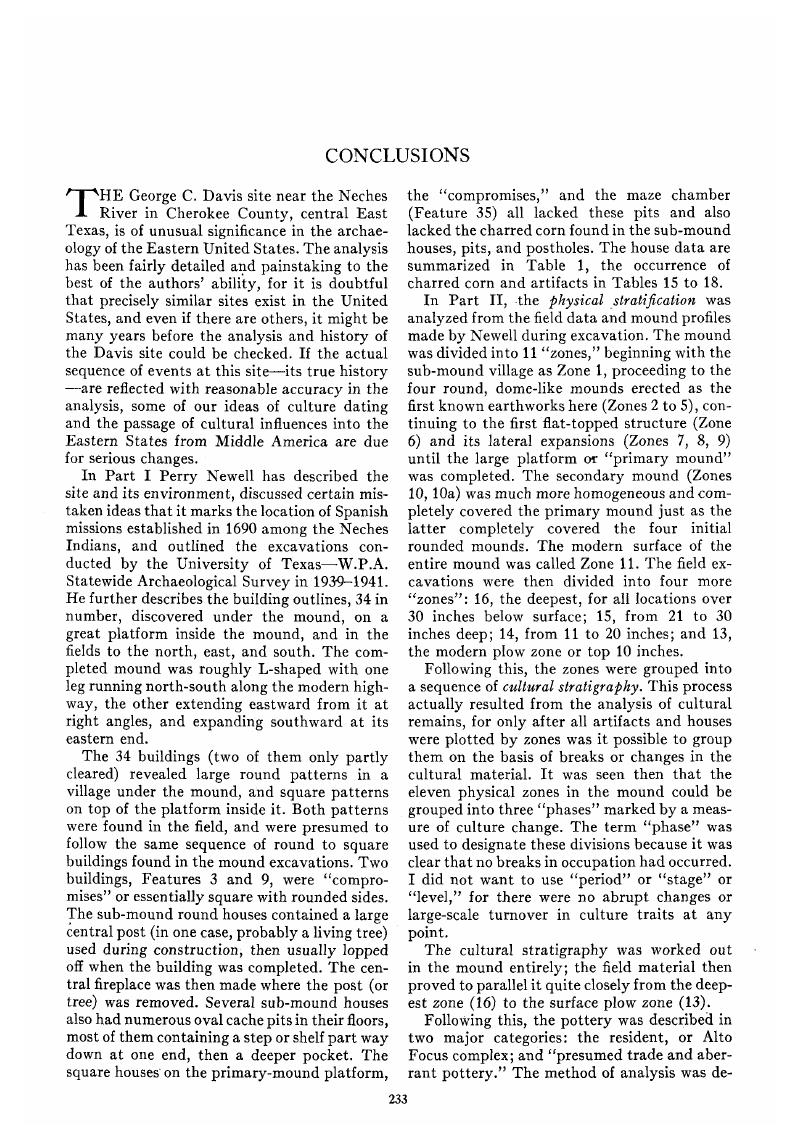No CrossRef data available.
Article contents
Abstract

- Type
- Part II. Analysis and Interpretation
- Information
- Copyright
- Copyright © Society for American Archaeology 1949
References
1 The Battle Mound in Lafayette County, southwest Arkansas (Moore, 1912, pp. 566-74) is much larger. A contour map made by Glen L. Evans, Lynn. E. Howard, and the writer in June, 1948, shows its base is 650 feet long, maximum height 36 feet, and a long ramp running up its eastern side. Under a Viking Fund grant, excavations are being conducted to determine the builders of this mound. The vessels shown by Moore did not come from the mound, but from a cemetery nearby. The Hatchel mound 12 miles northwest of Texarkana was not as long as Davis but more than twice as high.
2 The type Duren Neck Banded remains a puzzling problem. Before the sherd plotting was completed, it seemed that this type would belong in the last phase, but a half dozen sherds finally proved to be from under the first mound fills. If due to a Southwestern influence (Krieger, 1946), this trait is not supported by any other evidence of contact with the Southwest in the Davis site. Perhaps’ source for this trait will sometime be recognized in Middle or South America; or possibly it was a local invention.




